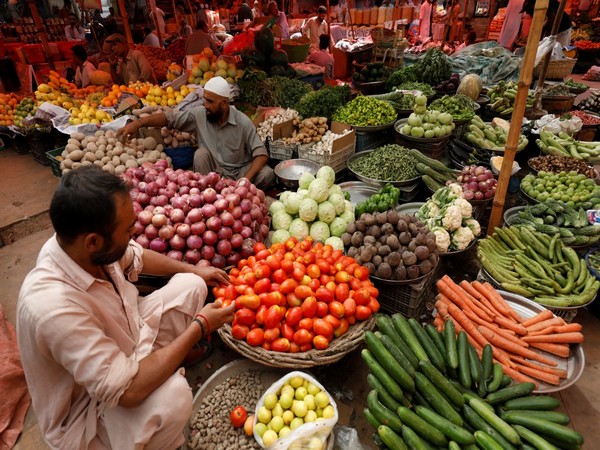By Staff Reporter
ISLAMABAD: Pakistan’s annual inflation rate eased to 26.9 percent in October, the lowest level in 10 months, as food and fuel prices dropped sharply, official data showed on Wednesday.
The Pakistan Bureau of Statistics (PBS) said the consumer price index (CPI) rose 1.1 percent month-on-month in October, compared with a 2 percent increase in September.
Food inflation, which accounts for more than a third of the CPI basket, slowed to 26.8 percent year-on-year in October from 33.1 percent in September, the lowest since June 2022.
The core inflation rate, which excludes volatile food and energy prices, edged down to 18.5 percent in October from 18.6 percent in September.
The average inflation rate for the first four months of the fiscal year 2023-24, which began in July, stood at 28.5 percent, well above the government’s target of 21 percent for the full year.
Pakistan has been grappling with high inflation since late 2021, driven by a weak currency, rising energy costs, and sever dollar shortages.
The central bank also kept its key interest rate unchanged on Monday and forecast inflation would ease in the months ahead after a sharp jump last month.
The decision to keep its main policy rate at 22 percent comes ahead of a visit by a delegation of the International Monetary Fund on Thursday that will review progress on targets set in a $3 billion programme approved in July to bail out the struggling economy.
The central bank had forecast inflation to ease this financial year – which began on July 1 – to average around 20 percent to 22 percent, from 29.2 percent in the previous financial year.
The IMF forecasts inflation at 25.9 percent this year, and has advocated mildly positive real interest rates. Central bank chief Jameel Ahmad has said that did not mean a recommendation for further rate hikes, but rather that monetary policy should remain tight.
The bank has kept rates unchanged since July following a series of hikes since April 2022, totalling 12.25 percentage points.
Pakistan’s currency, which tumbled in August, has also recovered significantly against the dollar following a crackdown on black market trading, which has helped tame inflation.
A successful IMF review remains critical for unlocking other external funding for Pakistan, which narrowly avoided a default on debt obligations earlier this year thanks to a last-gasp new deal that replaced an incomplete and stalled programme.
The wholesale price index (WPI), a measure of producer prices, fell to 24.6 percent year-on-year in October from 26.4 percent in September, while the sensitive price indicator (SPI), which tracks the prices of essential items on a weekly basis, rose to 34.2 percent from 32 percent.
Rural inflation was higher than urban inflation at 28.9 percent versus 25.5 percent in October. Both increased by 1.1 percent month-on-month.
Among food items, prices of onions surged by 38.7 percent month-on-month in October, followed by fresh vegetables (17.7 percent), fresh fruits (6.5 percent) and eggs (6 percent).
Prices of sugar declined by 10.2 percent, followed by gram pulse (3.7 percent), tomatoes (3.1 percent) and wheat flour (1.9 percent).
Among non-food items, electricity charges increased by 8.3 percent, followed by marriage hall charges (5.4 percent), accommodation services (4.5 percent) and liquefied hydrocarbons (3.9 percent).
Prices of motor fuel decreased by 4 percent, followed by transport services (1.6 percent) and construction input items (1 percent).
Copyright © 2021 Independent Pakistan | All rights reserved




